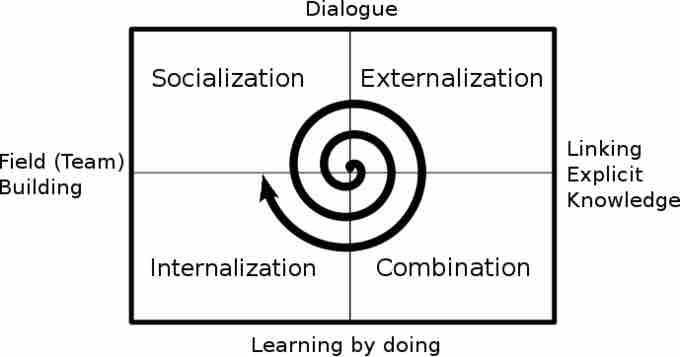Knowledge Management
Knowledge management (KM) comprises a range of strategies and practices used in an organization to identify, create, represent, distribute, and enable the adoption of insights and experiences. Such insights and experiences comprise of knowledge, either embodied in individuals or embedded in organizations, such as processes or practices. Once an organization has the framework in place that knowledge management provides, it can design its strategy, structure and processes in such a way that it uses what it knows to. This, in turn, creates value for its customers and the community as a whole.
Organizational Functions of Knowledge Management and Their Benefit
Knowledge management efforts typically focus on organizational objectives such as:
- Improved performance
- Competitive advantage
- Innovation
- The sharing of lessons learned
- Integration
- Continuous improvement of the organization
As a result, companies benefit as they are able to:
- Develop new products and services that add value to their customers (innovation, competitive advantage)
- Improve the value of their existing products (the sharing of lessons learned, improved performance, competitive advantage)
- Control costs and promote reuse (integration, continuous improvement of the organization, the sharing of lessons learned);
- Respond to environmental changes faster and experience less uncertainty (the sharing of lessons learned which can provide general knowledge about the environment)
How does an Organization Know it is Receiving these Benefits?
Here are a few of the criteria for measuring the efficacy of a knowledge management strategy:
- How long it takes to respond: This metric includes the speed in which the organization responds to customer needs, requests, or problems; brings a new product or service to market; and enters new markets.
- How much knowledge is reused: This metric measures how often employees access and use knowledge assets and avoid "re-inventing the wheel".
- How much is made from new products: This metric loos at the revenue from products that have been developed recently or are a certain number of years old.
- How satisfied and empowered employees are and feel: This metric measure the ability of the organization to hire talented staff, the ability of the organization to keep talented staff, and the amount of influence these knowledgeable staff members have.
Facets of Knowledge Management
Early KM technologies included online corporate yellow pages as expertise locators and document management systems. Combined with the early development of collaborative technologies (in particular Lotus Notes), KM technologies expanded in the mid-1990s. Subsequent KM efforts leveraged semantic technologies for search and retrieval and the development of e-learning tools for communities of practices (Capozzi 2007). Knowledge management systems can thus be categorized as falling into one or more of the following groups:
- Groupware
- Document management systems
- Expert systems
- Semantic networks
- Relational and object oriented databases
- Simulation tools
- Artificial intelligence (Gupta & Sharma 2004)
More recently, the development of social computing tools (such as bookmarks, blogs, and wikis) have allowed more unstructured, self-governing or ecosystem approaches to the transfer, capture and creation of knowledge, including the development of new forms of communities, networks.
Software tools in knowledge management are a collection of technologies and are not necessarily acquired as a single software solution. Furthermore, these knowledge management software tools have the advantage of using the organization's existing information technology infrastructure.
Organizations and business decision makers spend a great deal of resources and make significant investments in the latest technology, systems and infrastructure to support knowledge management. It is imperative that these investments are validated properly, made wisely, and that the most appropriate technologies and software tools are selected or combined to facilitate knowledge management.
Knowledge Management in Education and in Corporations
An established discipline since 1991 (see Nonaka 1991), KM includes courses taught in the fields of business administration, information systems, management, and library and information sciences (Alavi & Leidner 1999). More recently, other fields have started contributing to KM research, such as information and media, computer science, public health, and public policy. Many large companies and non-profit organizations have resources dedicated to internal KM efforts, often as a part of their business strategy, information technology, or human resource management departments (Addicott, McGivern & Ferlie 2006). Several consulting companies also exist that provide strategy and advice regarding KM to these organizations.

Knowledge Management
The Knowledge Spiral